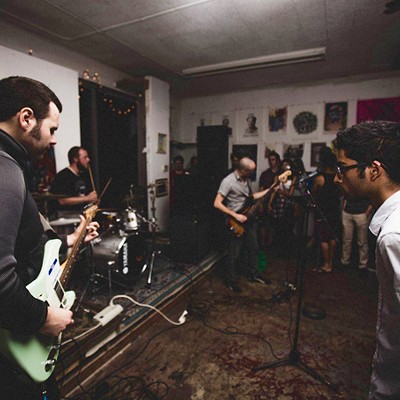Prix de West Invitational Art Exhibition
Opening Friday
On display through Sept. 6
National Cowboy & Western Heritage Museum
1700 N.E. 63rd
www.nationalcowboymuseum.org
478-2250
$12.50 adults, $9.75 seniors and
students, $5.75 children 4-12, free for children 3 and under
It's been more than a century since barbed wire and railroad tracks permanently hemmed in the West, cordoning off the vast stretches of plains and farmland, effectively taming the lands that had captured America's imagination.
While wagon trains and cattle drives are a thing of the past, art lovers are still drawn to Old West legends and icons. The National Cowboy & Western Heritage Museum brings together contemporary artists referencing the West for its annual "Prix de West Invitational Art Exhibition," opening Friday.
With more than 300 works of art pouring in from across the nation, "Prix de West" is as expansive as its subject matter. Sculptor Paul Moore is taking part for the first time this year, and his work is focused on the culture of the West. He has worked on large-scale monuments such as the Oklahoma Centennial Land Run monument and the Johnny Bench sculpture situated outside the AT&T Bricktown Ballpark. At 4 feet long, "Taos Rabbit Hunt," a depiction of a traditional hunt that kicks off an annual Taos fiesta, is the largest piece Moore has in "Prix de West."
His other work at the show, "Procession of the Trinity," focuses on the spread of Catholicism throughout North America.
"Normally with Native American culture, the thing we don't always think of is the relationship to Christianity," Moore said. "Catholicism was brought through the Southwest with the Spaniards sweeping through and conquering the Pueblo Indians. I wanted to do a piece that showed a procession with a monk and an incense burner. The smoke coming out of it is billowing up above the crowd. The three elements "? the Father, the Son and the Holy Spirit "? are in that smoke above the procession."
Painter Curt Walters returns to "Prix de West" for his 13th time. He is a en plein air impressionist, meaning that his canvases are painted outdoors as he gazes on the subject matter.
Although he's depicted scenes from all over the nation, he said he is most known for his Western landscapes, and can spend as much as one week returning to a location to finish a project. Walters said that just taking a picture and painting from that in the studio doesn't do the scene justice.
"I promise you, there is a huge difference in the content of the image," he said. "You can never capture the truth or the emotion that you can get while you're on the spot and seeing it. There are things you can do outdoors that you can't do in a studio. I can't say why, but there is an immediate response to the scene in front of you. It always shows up and you can always tell when the artist was there."
Walters will lead a seminar at 1 p.m. Friday, discussing his style. With such a long career, he said he will set a pace brisker than art fans might be accustomed to.
"People get a little dizzy when they come to my seminars," he said. "I have a theory that an image will register in three seconds. If it doesn't register in three seconds, then there is no use dwelling on it, and off it goes. I went to a seminar once for an artist, and it was the most boring thing I've ever been to because he talked about one image for over an hour."
Among the pieces he will show at "Prix de West" is a Grand Canyon landscape, which has become his signature subject matter.
"I think the Grand Canyon is the ultimate challenge for the landscape painter," Walters said. "I don't know of another place where you have the depth, the width, the challenge of drawing and color that you find in the Grand Canyon. I find it endlessly fascinating." "?Charles Martin










